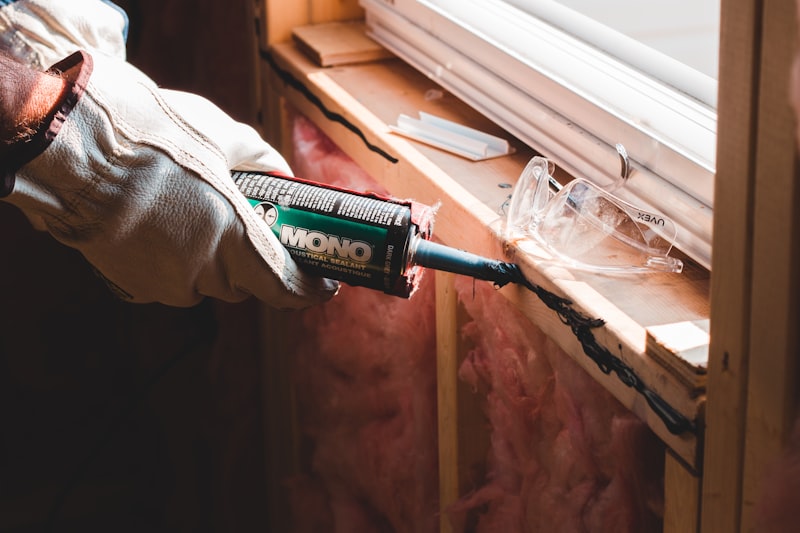Firstly, safety is key. Before diving into any repairs, ensure your car is parked in a safe location away from traffic. Pop the hood and locate the alternator. It’s typically found near the front of the engine and looks like a small generator with wires connected to it.

Next, disconnect the battery to prevent any electrical mishaps. Start with the negative terminal first, using a wrench to loosen the nut and then carefully remove the cable. Repeat the process for the positive terminal. Remember, this step is crucial to avoid shocks or short circuits.
Now, inspect the alternator belt for any signs of wear or damage. A worn-out belt can be a common cause of alternator problems. If you notice any cracks, fraying, or looseness, it’s time to replace the belt. Refer to your car’s manual for the correct belt specifications and tension adjustment.
After checking the belt, examine the wiring connected to the alternator. Look for loose connections, corrosion, or damaged wires. Tighten any loose connections and clean off any corrosion with a wire brush. Damaged wires should be carefully repaired or replaced to ensure proper electrical flow.
Once the wiring is checked, assess the condition of the alternator itself. Inspect for physical damage such as dents or cracks. If everything looks intact, the issue may lie with the internal components such as the voltage regulator or diodes. These components can sometimes be replaced separately if faulty.
If you suspect internal issues, it might be best to consult a professional mechanic unless you’re experienced with alternator repairs. Reassembling everything correctly is crucial to avoid further problems down the road.
Lastly, reconnect the battery terminals in reverse order (positive first, then negative). Start your car and check if the alternator is charging properly. Use a voltmeter to measure the voltage output across the battery terminals. A healthy alternator should typically read around 13.8 to 14.2 volts.
By following these steps, you can tackle alternator issues with confidence and get back on the road safely. Remember, if you’re unsure at any point, it’s always best to seek professional help to ensure your car runs smoothly.
Master Your Car’s Health: DIY Guide to Fixing a Malfunctioning Alternator
Understanding the signs of an alternator problem is the first step in proactive car maintenance. Imagine you’re driving down the road, and suddenly, your dashboard lights flicker, or you notice strange noises coming from under the hood. These could be early warnings that your alternator is struggling. Ignoring these signs could lead to a dead battery and a stranded vehicle.
So, what can you do if you suspect your alternator is on the fritz? Don’t fret; there are DIY steps you can take to diagnose and possibly fix the issue before it escalates. Grab your toolkit and let’s dive in.
First, conduct a visual inspection of the alternator and its connections. Look for any loose wires, corrosion, or visible damage. Sometimes, a simple tightening or cleaning can solve the problem.
Next, check the alternator belt for wear and proper tension. A loose or worn-out belt can cause the alternator to underperform. If necessary, tighten or replace the belt following your car’s manual guidelines.
Now, it’s time to test the alternator’s output using a multimeter. Start the engine and carefully connect the multimeter to the battery terminals. A healthy alternator should produce around 13.8 to 14.2 volts. Anything significantly lower could indicate an issue.
If these DIY checks reveal that your alternator needs replacement, consider your options. While replacing an alternator is more complex and may require professional help, many car enthusiasts find satisfaction in tackling this task themselves. Just remember, safety first—disconnect the battery before starting any repair work.
By mastering the basics of alternator maintenance, you can stay ahead of potential breakdowns and keep your car humming along smoothly. Remember, a little DIY know-how can go a long way in preserving your vehicle’s health and your peace of mind on the road.
Revive Your Ride: Step-by-Step Alternator Repair Tips Every Car Owner Should Know
Your car’s alternator plays a crucial role in keeping everything running smoothly. It’s responsible for charging the battery and powering the electrical system while the engine is running. However, alternators can wear out over time, leading to issues like dimming headlights or a dead battery. Learning how to repair your alternator can save you time and money, keeping your car in top condition.
First, diagnose the problem. Is it really the alternator or could it be a battery issue? Start your car and check if the headlights are dim or if warning lights are lit on the dashboard. If the battery light is on, chances are your alternator needs attention.
Before you begin, gather the necessary tools: typically, you’ll need a wrench set, screwdrivers, and possibly a belt tensioner tool. Safety glasses and gloves are also recommended.
Safety first! Start by disconnecting the negative terminal of the battery to avoid any electrical mishaps while working on the alternator.
Loosen the tension on the serpentine belt using the belt tensioner tool. Slide the belt off the alternator pulley and set it aside.
Unbolt the old alternator from its mounts. Depending on your car model, this may require accessing it from underneath or through the engine bay.
Position the new alternator and secure it with the bolts. Make sure it’s snug but not overly tight to avoid damage.
Carefully route the serpentine belt back over the alternator pulley. Use the belt tensioner tool again to apply tension and ensure it’s properly seated on all pulleys.
Reattach the negative terminal of the battery. Double-check all connections and make sure everything is securely in place.
Start your car and observe. Are the warning lights gone? Do the headlights shine brightly? If everything looks good, you’ve successfully repaired your alternator!
Mastering alternator repair not only saves money but also empowers you as a car owner. Remember, if you’re unsure about any step, consult your vehicle’s manual or seek professional help. Keeping your ride in top shape ensures smooth travels down every road.
Troubleshooting Made Easy: Fixing Your Car’s Alternator in Simple Steps

First things first, let’s diagnose the problem. If you notice your headlights dimming, strange smells coming from under the hood, or your battery light flickering on the dashboard, chances are your alternator needs attention. These signs often indicate that the alternator isn’t charging your battery properly, which could lead to your car stalling out unexpectedly.
Now, before you dive into fixing it, make sure your car is parked on a flat surface with the engine turned off. Safety first, as they say! Pop open the hood and locate the alternator. It’s usually a small, metallic unit with wires coming out of it, typically mounted near the top of the engine.
Next, check the connections. Over time, the wires connected to the alternator can become loose or corroded, causing poor electrical contact. Gently wiggle the wires to see if there’s any movement or corrosion. If you spot any issues here, tighten the connections or clean off any corrosion with a wire brush.
If the connections look good, the next step is to test the alternator itself. You’ll need a multimeter for this, which you can pick up at any hardware store. With the engine running, connect the multimeter to the battery terminals. A healthy alternator should read around 13.8 to 14.2 volts. If it’s significantly lower than that, or if the voltage drops as you rev the engine, your alternator might be on its last legs.
Replacing the alternator is often the final step if all else fails. Luckily, many auto parts stores carry replacement alternators that are relatively easy to install. Just make sure to disconnect the battery before you start swapping out parts to avoid any sparks flying.
DIY Car Care: Essential Steps for Repairing a Faulty Alternator
Dealing with a faulty alternator in your car can be daunting, but with some DIY know-how, you can tackle this repair effectively. The alternator plays a crucial role in charging your car’s battery and powering the electrical system while the engine runs. Signs of a failing alternator include dimming headlights, a dead battery, or warning lights on the dashboard.
To start, ensure your safety by parking your car on a level surface and disconnecting the battery to avoid any electrical mishaps. Begin by locating the alternator under the hood, often found near the engine. Depending on your car model, you may need to remove other components or belts to access it fully.
Next, use a wrench or socket set to loosen the bolts securing the alternator. Keep track of these bolts as you’ll need them for reinstallation later. Once the alternator is free, carefully disconnect the electrical connectors and wiring harness attached to it. Take note of their placements to ease reassembly.
Inspect the alternator for visible signs of damage such as burnt-out diodes or worn-out bearings. If you’re replacing it, ensure the new alternator matches the specifications of your vehicle. Install the new alternator by reversing the removal steps, reconnecting all electrical connectors securely.
Before starting your engine, double-check all connections and reattach the battery. Start the car and listen for any unusual noises or warning lights that might indicate further issues. If everything appears normal, you’ve successfully replaced your car’s alternator, saving time and money on professional repairs.
By following these DIY steps, you can confidently address a faulty alternator and keep your car running smoothly without the hassle of a trip to the mechanic.
Frequently Asked Questions
What tools do I need to fix a faulty alternator?
Learn about the essential tools needed to fix a faulty alternator efficiently and safely.
What are the steps to replace an alternator?
Learn the essential steps to replace an alternator efficiently. This FAQ provides clear, concise instructions for tackling this task, ensuring your vehicle’s electrical system functions smoothly.
Can I fix an alternator issue myself, or should I consult a professional?
Learn whether fixing an alternator issue yourself is feasible or if it’s better to consult a professional. Understand the complexity of alternator repairs and the risks involved in DIY attempts to make an informed decision.
How often should I check my alternator for issues?
Learn how frequently to inspect your alternator for potential problems and ensure optimal vehicle performance.
How do I diagnose a malfunctioning alternator?
Learn how to diagnose a malfunctioning alternator by checking for common symptoms such as dimming headlights, dashboard warning lights, or difficulty starting the engine. Use a multimeter to test the voltage output of the alternator and ensure it meets manufacturer specifications. Look for loose connections or worn-out belts that could affect alternator performance.

